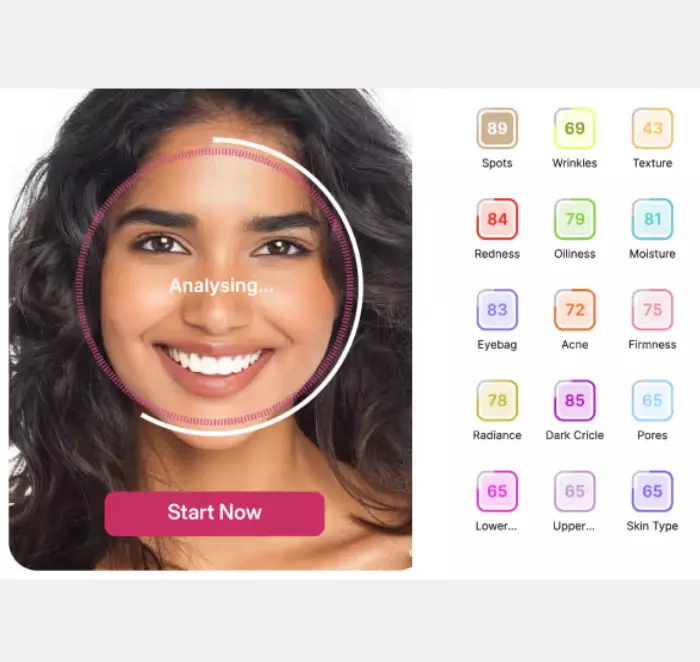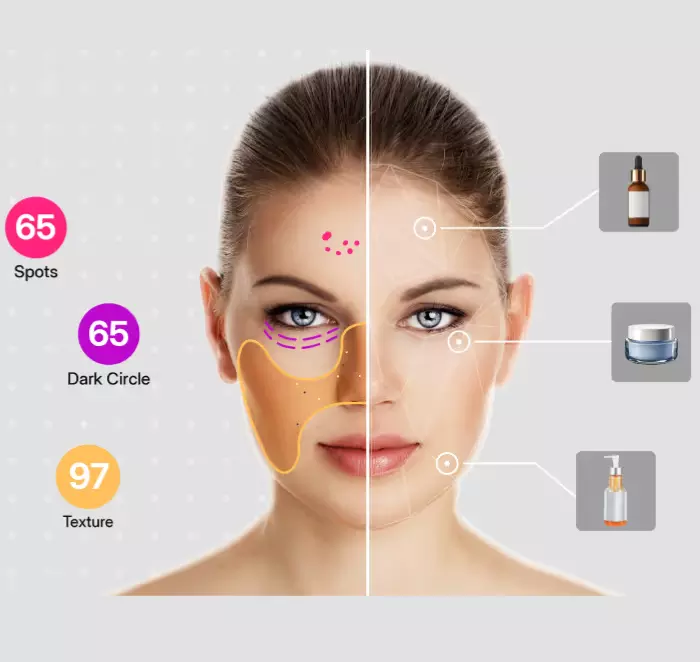AI-based skin analysis API


AI-driven skin evaluation


Tailored product recommendations
In-depth metrics analysis

Frequently asked questions
GlamAR’s skin analysis API helps users analyze their facial images to detect, evaluate, and quantify various concerns such as wrinkles, acne, pigmentation, pores, and texture irregularities by using image recognition and deep-learning models that are trained on 3 million datasets to deliver accurate results during analysis.
The skin analysis API helps users to analyze submitted facial photos by using AI-based skin segmentation, feature mapping, and condition classification, leveraging convolutional neural networks to detect multiple skin attributes, returning a structured JSON output with concern types, severity scores, and visual overlays.
The skin analysis API can detect more than 15 skin issues and concerns, such as wrinkles, acne, clogged pores, pigmentation, dark spots, redness, sensitivity, oiliness, and dryness, to provide users with a detailed and comprehensive report with the help of advanced AI-based algorithms.
Various industries can use the skin analysis API for multiple purposes, such as beauty and skincare brands for virtual diagnostics and personalization, dermatology clinics for early identification of skin conditions, e-commerce and retail for AI-driven product recommendations, and research and development teams for ingredient efficacy testing in skincare formulation.
By using a skin analysis API, brands will get multiple benefits, such as personalized product recommendations, increased customer engagement, enhanced conversion, and seamless integration, enabling them to offer a tailored skincare journey for their customers.
Brands or businesses can use a skin analysis API for various cases, including AR-powered skin health assessments in beauty retail apps, personalized product recommendation engines, clinical skin condition monitoring, cosmetic effectiveness studies, and brand loyalty programs, enabling users to understand skin conditions in-depth with a detailed analysis report.
















